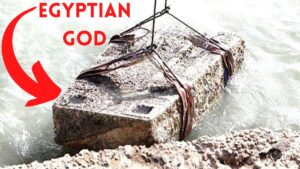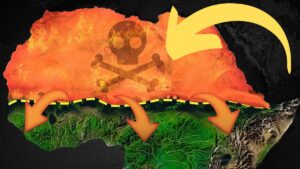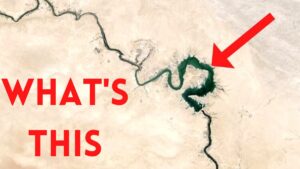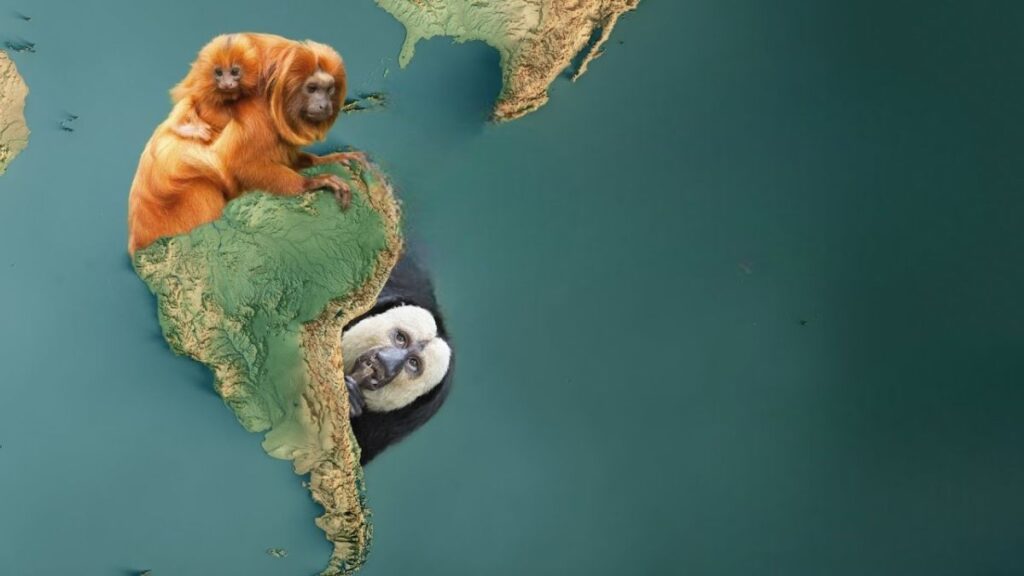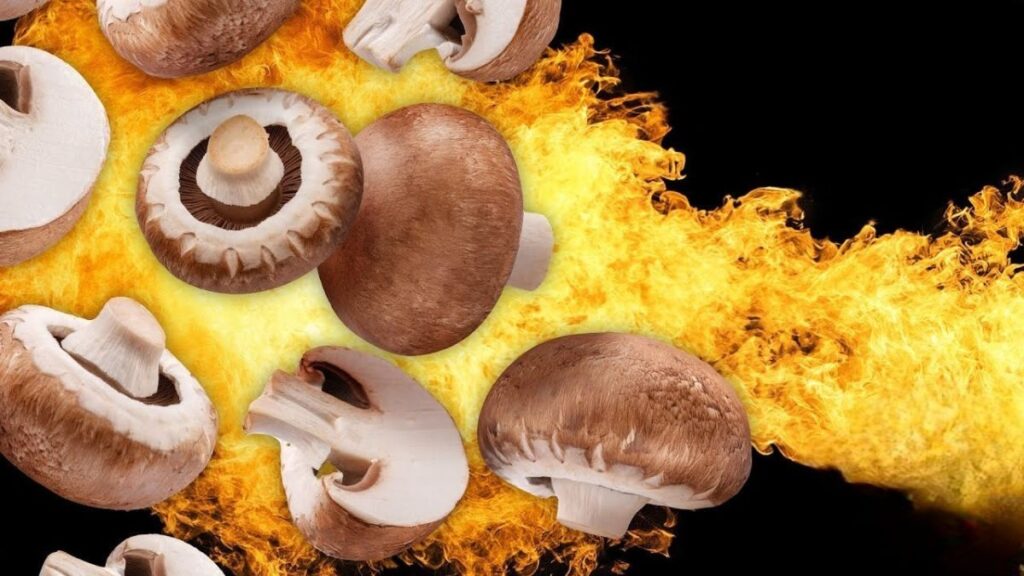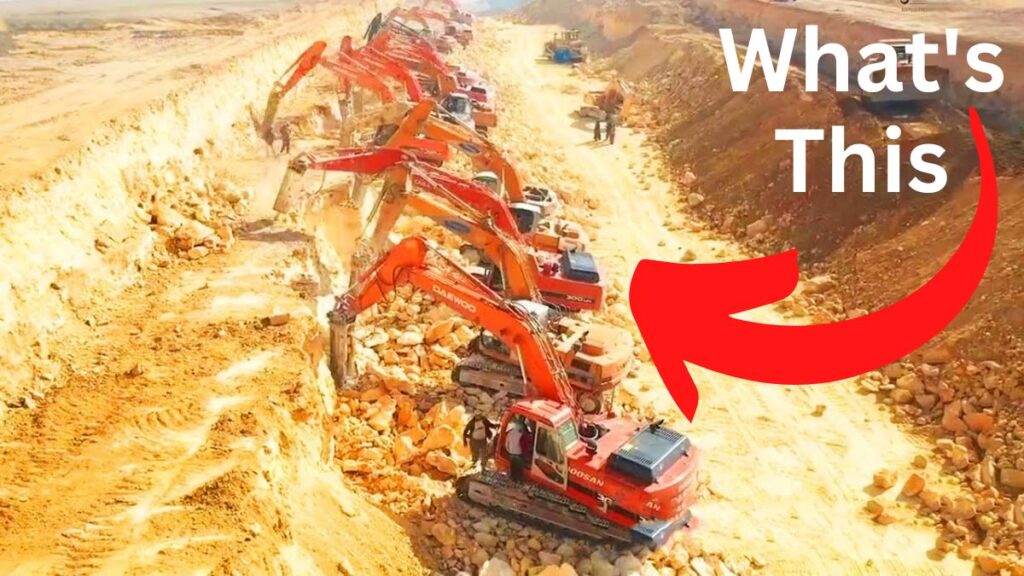
If you look at this map, you’ll see Saudi Arabia. More than one-fifth the size of America, it is the world’s 14th largest country by land area, with 2.14 million square kilometers, almost equal to Western Europe. The Kingdom of Saudi Arabia was first declared by IBN Saud as King Abdulaziz of Saudi Arabia in September 1932. With an annual rainfall below 150 millimeters, Saudi Arabia is one of the few countries on Earth without a single permanent river. However, there is an unusual activity taking place in the Kingdom’s desert.
There were only 400 square kilometers of fertile land in Saudi Arabia in the early 1960s, but now the country has a sprawling agricultural network of unusual looking fields that allow farmers to grow a wide variety of foods and fruits. The transformation of this desert into a green forest is, without a doubt, a breathtaking sight.
But how exactly did Saudi Arabia pull it off?
Saudi Arabia previously had only 400 square kilometers of arable land at the start of the 1960s. However, Saudi Arabia now has a 35,000 square kilometer arable land area, which is larger than the Netherlands and more than three times the size of Qatar. How they managed to expand the amount of arable land in such a short period is puzzling. Over the past three decades, Saudi Arabia’s agricultural progress has been astounding. It is a huge achievement in a country that receives an average of just four inches of rain per year, one of the lowest rates in the world.
Saudi Arabia has the most oil reserves of any country on the planet. In March 1938, at a depth of 1440 meters, oil was discovered in the Dammam oil field in Saudi Arabia. The country now holds approximately 17 percent of the world’s proven petroleum reserves. In Saudi Arabia, a liter of drinkable water costs more than a liter of oil. With an estimated 75 billion barrels of oil left, the Ghawar oil field is the world’s largest oil resource. As a comparison, the oil field holds enough reserves to fill 4,770,897 Olympic-sized swimming pools.
To put it another way, water is a significant problem in Saudi Arabia. However, Saudi Arabia currently exports wheat, dates, dairy products, eggs, fish, poultry, fruits, vegetables, and flowers to international markets. Dates, which were formerly a staple of the Saudi diet, are now mostly farmed for humanitarian aid around the world. How did this happen? Most of Arabian Peninsula agriculture was confined to date cultivation and small-scale vegetable production in an oasis, with the exception of a narrow strip of coastal land to the southwest. Food for the local people was supplied by small plots, and any surplus was sold to passing caravans. The kingdom’s agricultural development began in the 1970s. Programs to promote modern farming technologies and rural infrastructure were initiated by the government.
As a result, the production of all staple foods has increased dramatically. Saudi Arabia is currently totally self-sufficient in a number of consumables, thanks to large volumes of meat, milk, and eggs. There was a corresponding decrease in food imports as a result of Saudi Arabia’s increasing food production, and it now exports wheat, dates, dairy products, and other items including eggs, fish, and chicken to markets across the world.
Early in the program, intensive dairy, meat, poultry, and egg production were all established, and by 1985, local farms were already meeting domestic demand for numerous previously imported items. Now, Saudi Arabia is home to some of the Middle East’s most advanced, largest dairy farms. The annual milk production rate is one of the highest in the world at 1,800 gallons per cow. Aquaculture is one of the emerging areas in which the private sector is investing with government backing. There has been a steady rise in the number of fish farms, either in the sea or on land. Most are located on the Red Sea coast of Saudi Arabia. In terms of shrimp farming, it has been a great success.
This shrimp farmer south of Jeddah is run by Saudi hydrologists and marine engineers whose shrimp, including the prized black tiger, are mostly sold to the US and Japan by Saudi Arabia’s National Shrimp Company, Al-Rubien.
For example, the kingdom’s most notable agricultural achievement was its fast transition from a wheat importer to wheat exporter, which was recognized around the world. The country’s first grain silos were built in 1978, and it had become wheat self-sufficient by 1984. Saudi Arabia began exporting wheat to 30 nations shortly after, including China and the former Soviet Union, and average yields in the major producing districts of Tepok, Hail, and Kazim reached 3.6 tons per acre. Other grains, such as barley, sorghum, and millet, are also grown in large quantities by Saudi farmers. Wheat and other grains output has been drastically curtailed in recent years in order to conserve valuable water resources. Improved farming and transportation methods have led to an increase in fruit and vegetable production in Saudi Arabia.
Produce from Saudi Arabia is shipped to other countries in the region in large quantities. Watermelon, grapes, citrus fruits, onion, squash, and tomatoes rank high on the list of the country’s most prolific agricultural products.
Tropical fruits, such as pineapples, pawpaws, bananas, mangoes, and guavas, are grown at the Al-Hikmar research station in Jazan, Saudi Arabia’s well-watered southwest. As a result of this agricultural revolution, a variety of indigenous cuisines have become available that were unfathomable only a few generations ago. Saudi Arabians no longer rely on dates as a primary source of nutrition, although they are still an important supplement. Approximately half a million tons of dates are produced each year, with 450 distinct varieties, and they are used as humanitarian aid around the world.
Several factories, including one in Al-Hasa, are solely dedicated to the production of dates for foreign aid, donating tens of thousands of tons of dates each year to alleviate famine and food shortages, primarily through the United Nations Food and Agriculture Organization’s World Food Program (WFP).
Many countries have benefited directly from Saudi Arabia’s food aid through this World Food Program, and Saudi is the second largest contributor to the program, behind the United States. A variety of government programs, including the provision of interest-free loans and technical and support services, have been essential to Saudi Arabia’s agricultural sector’s recent growth. Low-cost water, fuel, and power, as well as duty-free imports of raw materials and machinery, have also helped the agriculture industry. In addition, foreign joint venture partners of Saudi people or firms are excused from paying taxes for a period of up to 10 years, and the investment regulations in place from April 2000 offer extra incentives.
The Ministry of Agriculture is the major institution in charge of putting agricultural policy into action, and it does so by conducting research and offering extension services to farmers.
Saab, the Saudi Agricultural Bank, provides subsidies and interest-free loans as another aid institution. The Grain Silos and Flour Mills Organization was founded in 1972 to buy and store wheat, build flour mills, and make animal feed to help agriculture flourish across the country. Saudi Arabia has invested a significant amount of money in modernizing the highways that connect agricultural regions to the country’s major markets. The government continues to support new farmers in implementing capital-intensive projects, with a focus on diversification and improved efficiency. Under the development plans to boost farm output, the government also funds and supports research programs targeted at developing food crops, increasing yield, and developing pest-resistant plant strains.
Local farmers and scientists collaborate on these initiatives at agricultural research facilities at Saudi Arabian universities and institutions. The world’s largest continuous sand desert, the Rub’ Al-Khali, is located in Saudi Arabia. It’s 650,000 square kilometers, larger than the combined areas of Holland, Belgium, and France put together.
The staggering height of the sand dunes is also 250 meters. In addition, Saudi Arabia is the world’s biggest country without a river. Most of the country was either desert or semi-arid. However, despite the absence of rivers, the country has a vast coastline that stretches from the Persian Gulf to the Red Sea. But because of the country’s rapid development and the resulting increase in water consumption, water is both limited and exceedingly valuable. As a result, the country looked for new ways to ensure that it has enough water to meet its growing needs. Saudi Arabia relies heavily on aquifers for its water supply. Water is stored in large underground lakes and reservoirs. It was during the 1970s that the government made a significant effort to find, map, and estimate the capacity of these aquifers.
Consequently, tens of thousands of deep tube wells were drilled in the most promising urban and agricultural locations. The sea is another major source of water.
This is accomplished through desalination, a process that converts saline sea water into potable water. Saudi Arabia produces the most desalinated water in the world. Saline Water Conversion Corporation (SWCC) operates 27 desalination plants that produce more than 3 million cubic meters of potable water daily. More than 70 percent of the water consumed in cities comes from these plants, as does a significant part of the water required by industry. They’re also a significant source of electric power. Recycled water is a growing source of water. Water for domestic purposes in urban areas has to be recycled at least 40 percent of the time by the country.
Recycling factories have been developed in Riyadh, Jeddah, and other large metropolitan industrial centers to achieve this goal. Irrigation of farm fields and urban parks is done with recycled water. As a result of all these efforts, enormous swaths of desert have been turned into productive farming. In 1976, there were fewer than 400,000 acres of arable land, but by the 21st century, there are millions of acres of fertile land.
What do you think of the agricultural progress in Saudi Arabia? Let us know what your thoughts are in the comments section below.
Explore:

